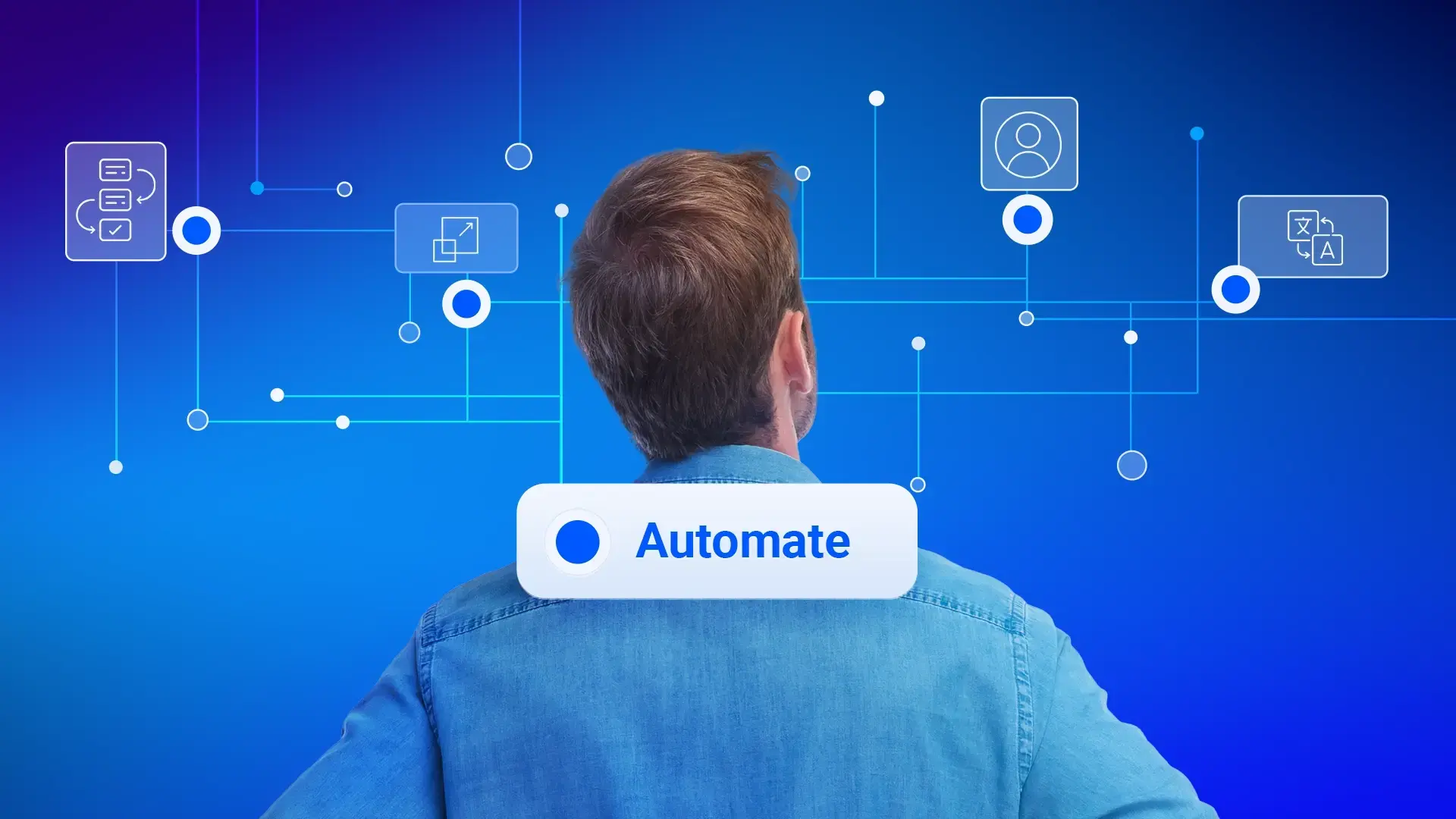Marketing and artificial intelligence are slowly but surely becoming inseparable, with algorithms quietly shaping the world around us. As we step into 2025, the landscape is changing even faster, with AI optimizing processes and driving more personalized, insightful, and dynamic interactions between brands and consumers
As marketers, it’s crucial to understand how these advancements will impact daily operations and long-term strategies in 2025 and beyond.
Already, algorithms determine much of what we see on platforms like Google, Facebook, and Instagram. But it’s not just about delivering relevant content anymore; that ship sailed long ago. The growth of AI is set to unlock even more possibilities - from automated precision marketing, generative AI for content creation, and more.
So, what AI trends are on the horizon for 2025 that marketers need to embrace? Let’s dive in.
1. Hyper-personalization with predictive analytics
AI is moving far beyond basic personalization. In 2025, predictive analytics will become the driving force behind hyper-personalized marketing. Rather than reacting to customer actions, AI is set to anticipate their needs before they even realize them.
Imagine an e-commerce brand that uses AI to predict when a customer might need a specific product based on purchase history, browsing behavior, and external factors like seasonality. This predictive power allows brands to serve tailored recommendations, ads, and offers at precisely the right moment, increasing both engagement and conversion rates.
The future of AI marketing lies in this ability to predict — not just respond.
But this goes beyond just one-on-one personalization: AI-driven analytics can optimize entire campaigns in real time, adjusting strategies based on predicted trends.
For marketers, automated precision marketing means a shift towards more data-driven, proactive campaigns that feel less intrusive - yet are more relevant than ever.
Discover how AI is reshaping dynamic content creation.
2. Generative AI for marketing
Generative AI has rapidly passed the novelty stage and become an indispensable part of the marketing process. In the coming years, marketers will increasingly rely on AI not just to automate repetitive tasks, but to actively assist in scaling the creative process.
From generating high-quality ad copy to designing visuals at scale using creative automation, AI helps creative teams scale content production without sacrificing quality.
Back in 2018, platforms like Alibaba’s AI writer were already capable of crafting engaging copy with little human input. Now, seven years later, most, if not all marketers have experimented with some form of generative AI in the content creation process.
This means we should expect even more AI-driven creative solutions to emerge, allowing marketers to deliver consistent, on-brand content at scale.
Discover how AI is reshaping dynamic content creation.
The concept of dynamic creative goes even further when AI helps modify and adapt content in real-time based on performance insights, ensuring each asset resonates with the intended audience.
Learn more about how dynamic creative works.
3. A balancing act: real vs. AI-generated content
Though, generative AI becoming a staple in the marketer’s toolkit doesn’t mean AI will (or should, for that matter) replace human creativity.
Instead, it’s likely to become a co-creator, handling the heavy lifting while human teams focus on strategy and the emotional depth of campaigns.
It’s an issue that’s already prevalent today: distinguishing between ‘real’ and AI-generated content. Relying too heavily on AI-generated content can even foster a sense of inauthenticity amongst your audience, and may alienate them; with an image that’s just too perfect, or a blog post that touches the surface but doesn’t quite dive deep enough.
Discover how AI is reshaping dynamic content creation.
The principle marketers should take into 2025 is to adopt a hybrid approach - use AI tools to scale your processes, but maintain the authenticity, emotional connection and depth your audience will relate to. Make your creative processes more efficient, without losing the magic of human intuition.
4. AI-driven customer insights for data-backed decisions
As AI technologies advance, their ability to provide deep, actionable insights into consumer behavior is also growing exponentially. AI-driven insights allow marketers to track engagement, sentiment, and consumer preferences with precision and speed that would have been unimaginable just a few years ago.
Rather than waiting for the results of a campaign or the aftermath of a product launch, marketers can rely on real-time data to make adjustments instantly.
Whether it’s tweaking messaging to improve conversion rates or identifying emerging trends across social media, AI-powered marketing platforms offer a granular understanding of what drives customers to act.
5. Real-time ad optimization: using AI in programmatic advertising
AI in programmatic advertising is no longer just about automating ad placements. In 2025 and beyond, it's about real-time optimisation, where every element of a campaign is continuously fine-tuned for peak performance.
This shift means that the days of "set it and forget it" advertising are over, as AI takes a more active role in ensuring that every advertising dollar works as hard as it possibly can.
Picture a campaign management platform that leverages AI, such as Bannerflow, that’s not only placing your ads, but also monitoring their performance in real time. If an ad isn't hitting the mark, it’ll immediately step in to make changes - adjusting the messaging, shifting the target audience, or even reallocating the budget to another platform.
This kind of advanced, hands-off automation ensures that campaigns are always optimized, reducing the manual workload for marketers and ultimately increasing efficiency.
With real-time data driving every decision, the use of AI in programmatic advertising allows for smarter budget management, increasing engagement rates while ensuring a strategic and efficient use of resources.
It's all about making sure that each dollar spent is targeting the right audience, at the right time, with the right message.
6. Omnichannel marketing with AI integration: consistency at scale
In such a fragmented digital landscape, maintaining a consistent brand presence across all platforms is becoming more of a challenge. AI will be central to omnichannel marketing strategies, helping brands deliver seamless experiences that are not only consistent, but also deeply personalized.
Think of a customer browsing a brand’s mobile app, interacting with social media ads, and then eventually visiting a brick-and-mortar store. You’ll want to ensure that the messaging and offers across these touchpoints are tailored and coherent, reinforcing brand loyalty and ultimately driving conversions.
With tools like AI-powered dynamic creative optimisation, marketers can easily adapt content to various platforms while ensuring that each interaction feels personalized to the individual user’s journey.
The future of AI in marketing with Bannerflow
As we look to 2025 and beyond, it’s clear that AI is no longer just a tool in marketing — it’s shaping the very core of how brands interact with their audiences. From real-time ad optimization to predictive personalization, AI is driving deeper engagement, more precise targeting, and ultimately better results.
But to truly unlock the potential of AI, marketers need platforms that allow them to act on real-time data and scale their creative efforts without losing the personal touch. And this is where platforms like Bannerflow come in.
By empowering marketers with tools for dynamic creative optimization, AI-driven insights, and seamless omnichannel integration, Bannerflow equips brands to navigate the complexities of this new AI-powered marketing landscape. It’s not just about automating tasks — it’s about delivering consistent, personalized experiences that resonate with customers across every touchpoint.
Eager to see how automation can transform your marketing strategy for 2025? Check out our 3-minute demo and discover how Bannerflow can help you stay ahead in this rapidly evolving world of AI-driven marketing.








